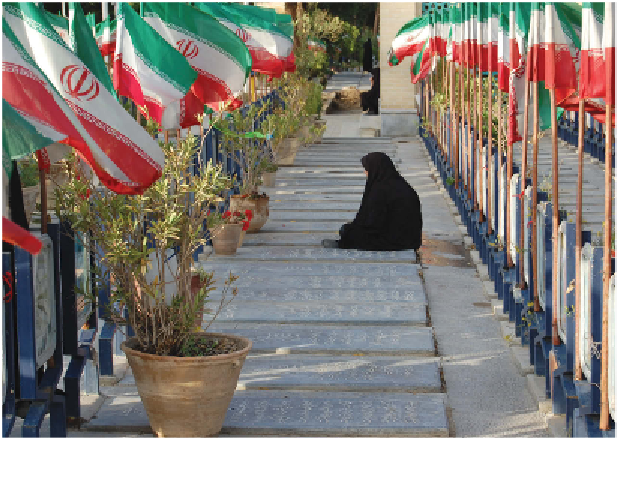Travel Reference
In-Depth Information
Could be anywhere: A mother remembers her son—lost for God and country.
Two decades after the war's end, the cemetery was still very much alive
with mourning loved ones. A steady wind blew through seas of l ags on the
day of our visit, which added a stirring quality to the scene. And the place
was bustling with people—all mourning their lost loved ones as if the loss
happened a year ago rather than twenty. h e cemetery had a quiet dignity,
and—while I felt a bit awkward at i rst (being part of an American crew with
a big TV camera)—people either ignored us or made us feel welcome.
We met two families sharing a dinner on one tomb (a local tradition).
h ey insisted we join them for a little food and told us their story: h ey met
each other twenty years ago while visiting their martyred sons, who were
buried side by side. h ey became friends, their surviving children married
each other, and ever since then they gather regularly to share a meal on the
tombs of their sons.
A few yards away, a long row of white tombs stretched into the distance,
with only one i gure interrupting the visual rhythm created by the receding
tombs. It was a mother cloaked in black sitting on her son's tomb, praying—a
pyramid of maternal sorrow.
Nearby was a dif erent area: marble slabs without upright stones, l ags,
or photos. h
is zone had the greatest concentration of mothers. My friend















































































